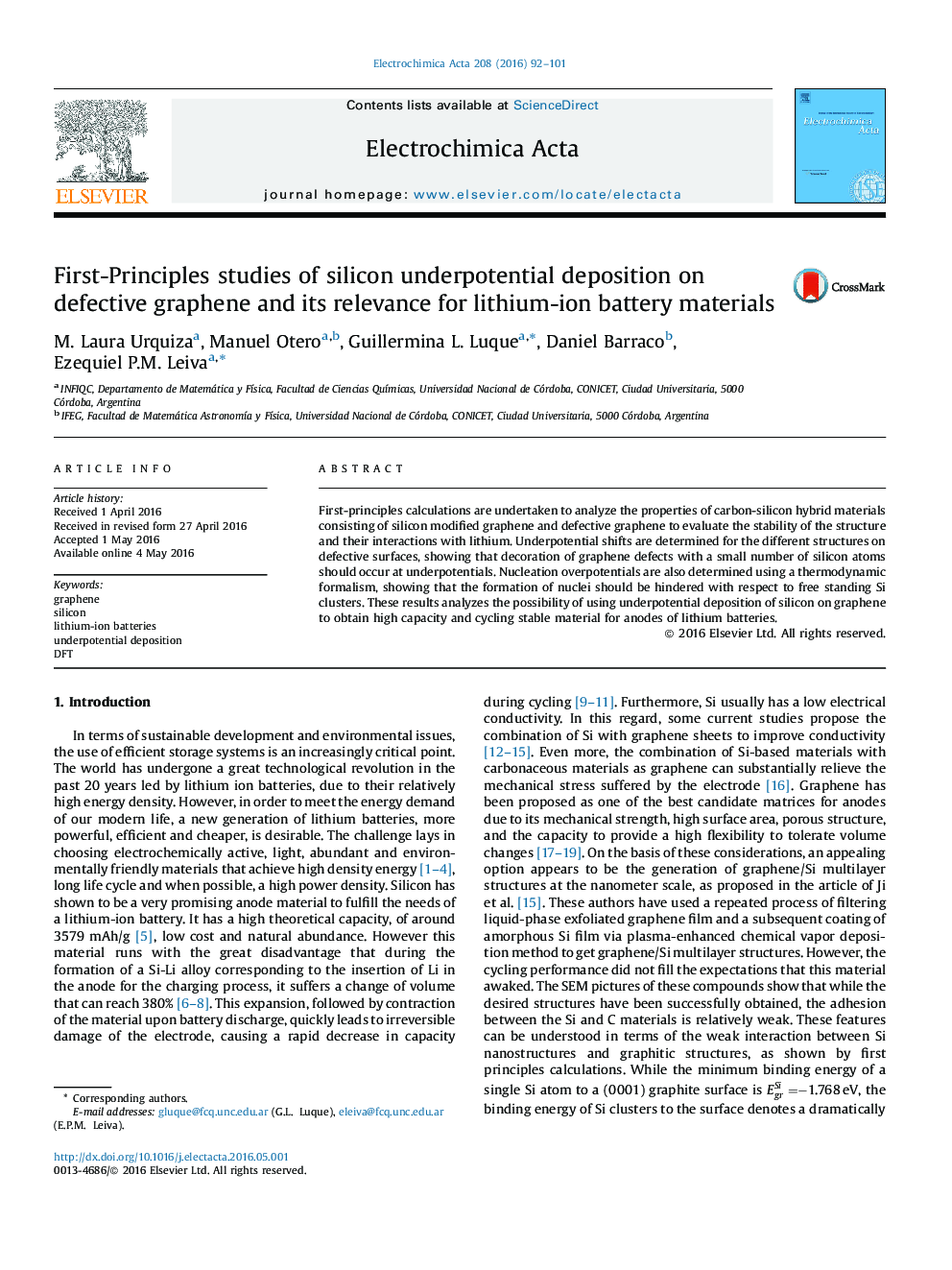| Article ID | Journal | Published Year | Pages | File Type |
|---|---|---|---|---|
| 182922 | Electrochimica Acta | 2016 | 10 Pages |
•DFT calculations show that the presence of defects on graphenic surfaces favours the stability of silicon-graphene hybrid materials.•Small silicon clusters may be deposited at underpotentials on defective graphene surfaces.•Lithium storage in silicon/graphene hybrid materials is analysed.
First-principles calculations are undertaken to analyze the properties of carbon-silicon hybrid materials consisting of silicon modified graphene and defective graphene to evaluate the stability of the structure and their interactions with lithium. Underpotential shifts are determined for the different structures on defective surfaces, showing that decoration of graphene defects with a small number of silicon atoms should occur at underpotentials. Nucleation overpotentials are also determined using a thermodynamic formalism, showing that the formation of nuclei should be hindered with respect to free standing Si clusters. These results analyzes the possibility of using underpotential deposition of silicon on graphene to obtain high capacity and cycling stable material for anodes of lithium batteries.
Graphical abstractFigure optionsDownload full-size imageDownload as PowerPoint slide
